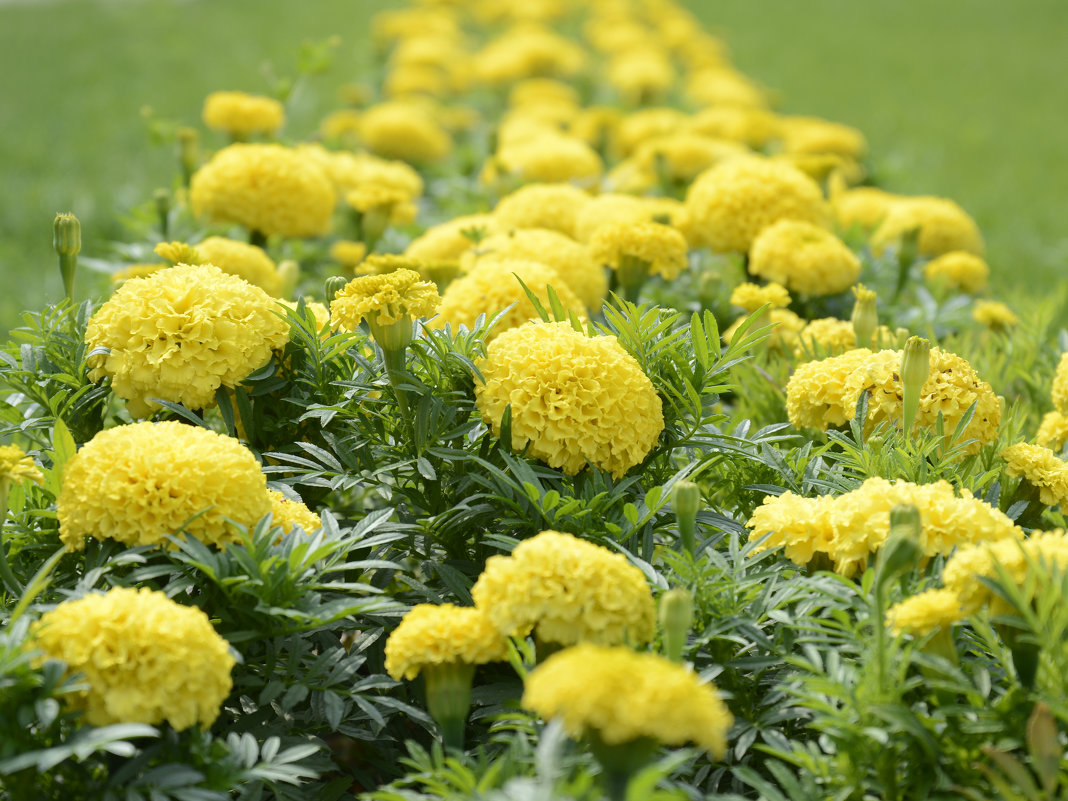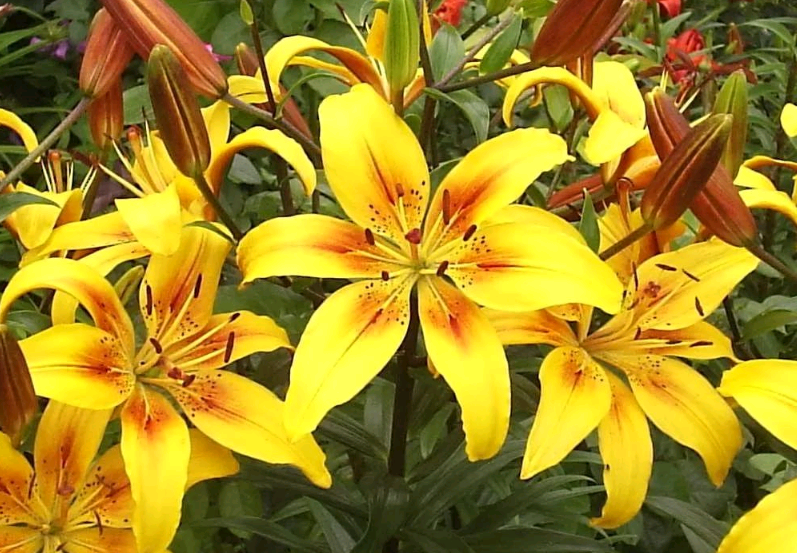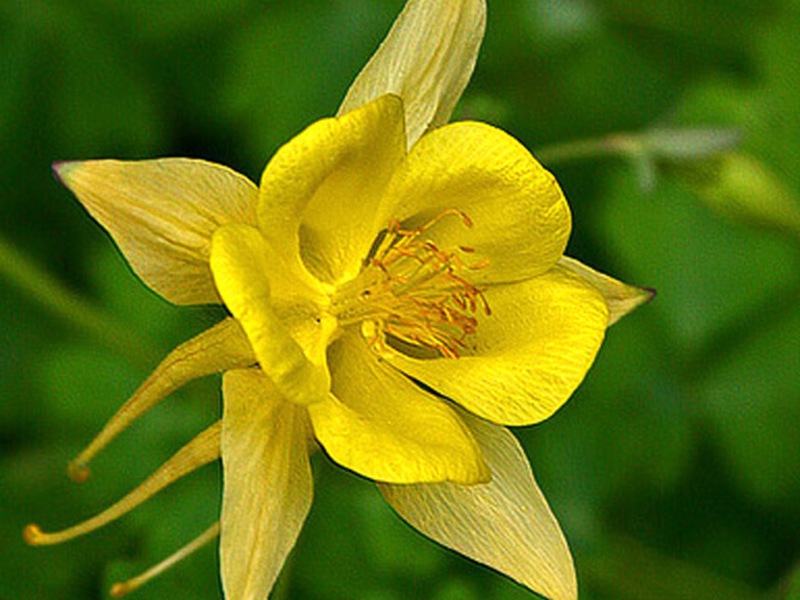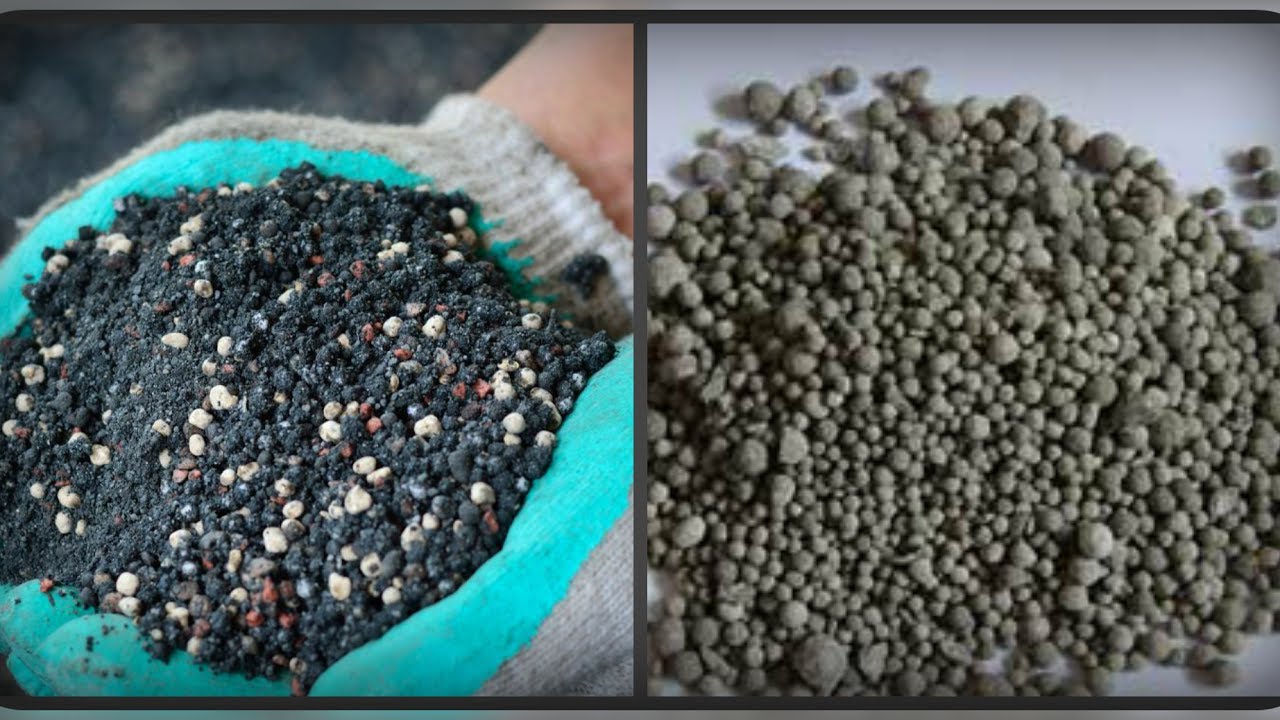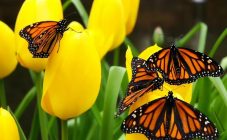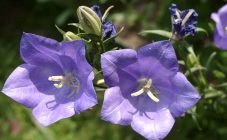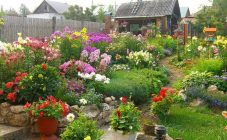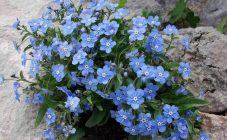Content:
Modern gardeners today have a large selection of perennial crops that will help create beautiful and vibrant flower beds. A large selection of colors allows you to make wonderful compositions. Many people choose different colors as a basis, a yellow shade is very popular, as a manifestation of light and warmth, lightness and airiness.
Description
Since ancient times, yellow flowers have been associated with the sun. They are especially happy with such beautiful plants in spring, as they look like the sun.
If you want to create a mixborder in the country, it is best to make it from 3-5 varieties, which will differ from each other only in the shades of the inflorescences, so that the flowerbed does not merge into a single spot.
When choosing flowers for a spring flower bed, you can pay attention to yellow daffodils, crocuses, tulips. Beautiful inflorescences in the form of candles of hyacinths will delight the eye in spring, decorate any garden. A small perennial forzia bush will look beautiful as a central element. For a summer flower bed, you can use sedum, sunflower, rudbeckia, helenium, chamomile. Ever-green cultures will beautifully complement and set off the yellowish color.
The best perennials in yellow
Today, the list of yellow perennial flowers for summer cottages is represented by a wide selection of plants. Among them are meadow crops, high and low perennials, as well as representatives that grow only in indoor conditions. All of them can be divided into groups according to the flowering period, features of germination, frost resistance, the shape of the inflorescences (chamomile, candle, fluffy buds and much more). With the help of this classification, it is more convenient to choose crops for a home flower bed.
The best spring perennials
Among the most interesting and popular perennial yellow flowers are:
- Crocus. This beautiful plant is almost the first to bloom. Reproduction takes place by bulbs. They grow best on acidic, well-moisturized, fertile soils. Flowering begins in mid-spring and lasts about 2 weeks.
- Tulip. It is very difficult to meet a spring flower bed without tulips. Depending on the variety, tulips bloom from the beginning of May. They prefer light fertile soil in areas where the sun will shine most brightly and for a long time.
- Narcissus. A fragrant perennial that is well adapted to wintering even without additional shelter. The shape and shades of daffodils are very diverse.
- Iris. A very popular perennial plant that, depending on the variety, differs in color, flowering period and height. They prefer neutral soil and abundant watering, especially during the flowering period.
- Primroses. Miniature crops that bloom very early. Flowering continues until June. They prefer light fertile soils, moderate humidity, tolerate cold winters well. Reproduction takes place by dividing the parent bush.
The most popular summer flowers
Among the plants that bloom in the summer, there is a group of crops that are in the greatest demand:
- Lily.Very beautiful bulbous perennial that grows best in sunny areas. Without a transplant, you can grow for about 4-5 years, then you should rejuvenate the culture by dividing the bush. Flowering begins in mid-summer. To prolong the beauty of the bloom, the wilting buds should be removed immediately.
- Peonies. Perennial plants that delight with beautiful flowering in late spring - early June. Achieving a beautiful lush flowering is possible only by carrying out regular fertilizing and watering.
- Rose flower. Almost all gardeners strive to grow this beautiful plant. There are a lot of yellow representatives of this plant. True, to grow this beautiful flower, you will need to try, because the rose is very capricious.
- Chrysanthemum. An unpretentious perennial plant that begins to delight with beautiful yellow flowers from mid-August. When grown properly, beautiful buds will cover the entire shrub. For productive growth, plants require soil with neutral acidity, regular watering and top dressing with organic and nitrogen fertilizers.
- Gladioli. These are beautiful yellow crops that will decorate any flower bed in early fall. The area where gladioli grow should be well lit. For productive flowering, regular fertilizing with phosphorus and potassium compounds is required.
The rarest perennials
Above were listed common perennials that bloom in yellow. But there are a number of crops that have no less beautiful flowering, at the same time, they are relatively rare:
- Aquilegia. A very beautiful flower with yellow flowers, which belongs to the buttercup family. For a peculiar decorative appearance of leaves and inflorescences, it received the name - the flower of elves. The flowering period is one month, rarely up to 7 weeks.
- Rudbeckia. Beautiful yellow perennial flowers that closely resemble chamomile. Plant height can be from 0.5 to 2 m. The highest varieties require additional support in the form of a stick, in accordance with the growth of the crop.
- Evening Primrose. A very beautiful perennial yellow shrub that tolerates winter well, is unpretentious in care. The main and practically only requirement for normal growth is abundant lighting.
- Delphinium. A tall plant that blooms immediately with a lot of flowers. Abundant flower growth is ensured by regular feeding, which is carried out twice a season. The first time in the spring with nitrogen-containing compounds, the second time during the flowering period with potash and phosphorus fertilizers.
- Ranunculus. Popularly, this perennial plant is often called a garden buttercup. The buds are very beautiful and peculiar, much more beautiful than the field version. The decorativeness of the inflorescences attract the attention of gardeners from all over the world. They grow best in lighted areas with fertile soil. If you provide the plant with proper care, then flowering will continue from spring to July.
Perennial care
Before deciding exactly which plants will be planted in the flowerbed, you should carefully read the rules for keeping and planting. It is best to prepare the soil in the autumn, directly engage in planting in early spring.
In the autumn, all yellow perennial flowers should be cut off for the winter, with the exception of ever-blooming ones. The height of the left stem should be about 10-15 cm. Some plants like a mild climate, therefore, for safety in winter, they require additional shelter, for example, they can be carefully covered with spruce branches or dry foliage.
In order for perennials to bloom and grow beautifully, they should be fed twice a year.In early spring, nitrogen-containing compounds are used to activate growth; closer to flowering, the basis of fertilizers should be phosphorus and potassium.
An important rule of active and beautiful growth is regular transplantation. In a large density, crops grow and develop poorly. Under this circumstance, they are susceptible to being affected by various diseases. When the first signs of diseases and pests appear, plants should be treated with appropriate chemical compositions.
Particular attention should be paid to bulbous crops. They are planted in the fall. It is important not to remove the leaves in summer until they are completely dry. If this is done earlier, then the plant's immunity will be too undermined.
The yellow color palette gives any flower garden additional charm and airiness. When choosing a monotonous flower bed, you should carefully look at the yellow color. This shade symbolizes air, bright sun and lightness. Today gardeners are offered by breeders a large selection of plants, among which there are varieties that bloom in yellow.
